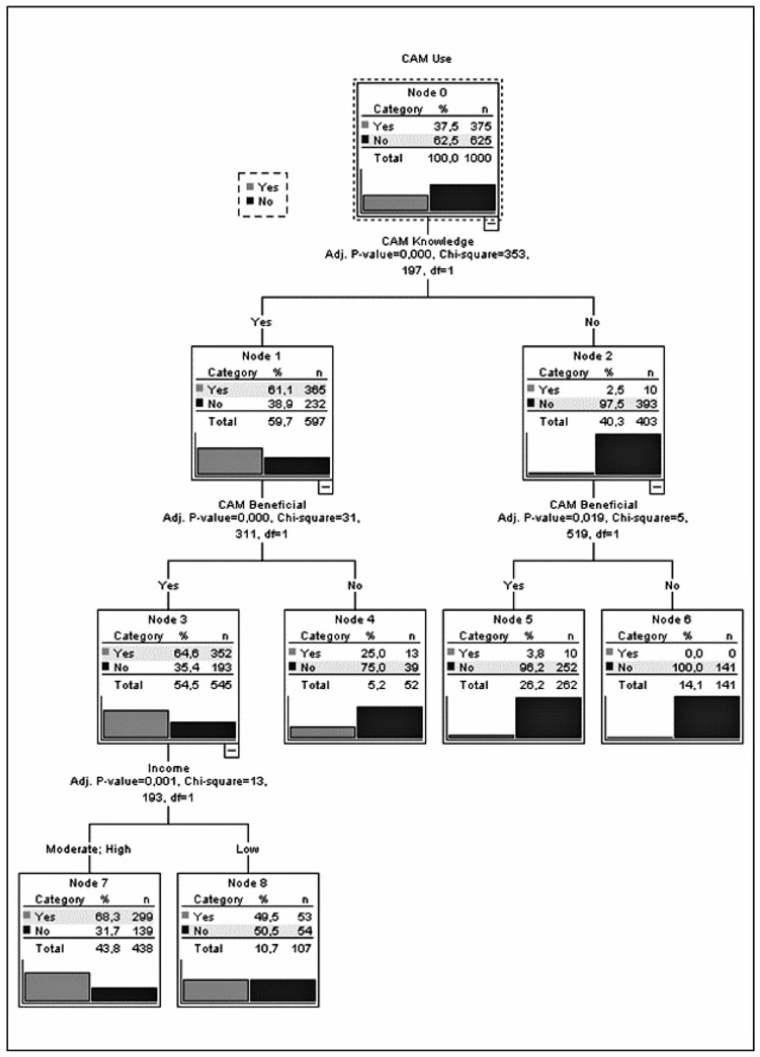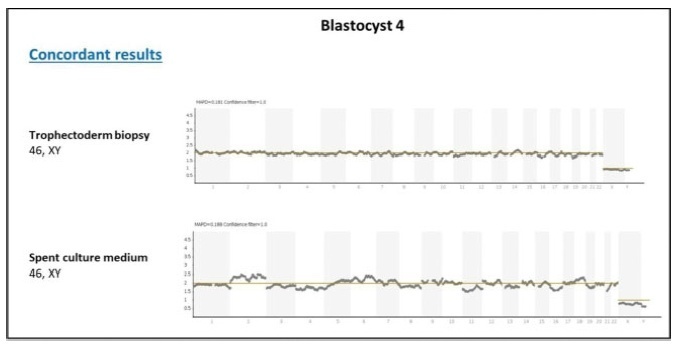Summary
Rev Bras Ginecol Obstet. 2021;43(11):853-861
To evaluate the knowledge, attitudes, and behaviors regarding complementary and alternative medicine methods of patients who were admitted to gynecology outpatient clinics.
In the present survey, a questionnaire on complementary and alternative medicine practices was applied on 1,000 women (ages between 18 and 83 years old) who were admitted to the gynecology outpatient clinic of a tertiarymaternity hospital. Demographic features and knowledge, attitudes, and behaviors about these methods were inquired in face-to-face interviews.
While 80.7% of the total participants thought that complementary and alternative medicine was beneficial, only 37.5% of them had used these methods previously. The rate of prior knowledge on this subject was of 59.7% and the source of information was physicians for 8.5% of the patients. However, 72.4% of all participants wanted to obtain information on these methods and 93.7% wanted to be informed by physicians. In the decision tree model, having knowledge about complementary and alternative medicine was the most effective factor determining its use (p<0.001). Phytotherapy was found to be the most used method, with 91.4%. The most preferred plant was onion (18.9%), and the most common reasons for herbal use were stress (15.4%) and fatigue (15.2%).
More than one-third of the patients who applied to the gynecology outpatient clinics used one of the complementary and alternativemedicine methods at least once. As gynecologists and obstetricians, we need to be more knowledgeable about these methods to provide correct guidance to our patients for accessing accurate and effective information.

Summary
Rev Bras Ginecol Obstet. 2021;43(11):862-869
The puerperium is a complex period that begins with placental delivery and lasts for 6 weeks, during which readaptation of the female organism and redistribution of blood volume occur. This period is conducive to the occurrence of thromboembolic events. In the context of the SARS-CoV-2 pandemic, the virus responsible for COVID-19, the attention of the scientific community and health professionals has been focused on obtaining insights on different aspects of this disease, including etiology, transmission, diagnosis, and treatment. Regarding the pregnancy-postpartum cycle, it is opportune to review the clinical conditions that can occur during this period and to investigate dyspnea as a postpartum symptom in order to avoid its immediate association with COVID-19 without further investigation, which can lead to overlooking the diagnosis of other important and occasionally fatal conditions.
Summary
Rev Bras Ginecol Obstet. 2021;43(11):870-877
To determine the association between maternal mobile phone use and adverse outcomes in infants, children, and mothers.
In March 202, we conducted a search on the MEDLINE, Embase, and Scopus databases. Data extraction and an assessment of the quality of the studies were performed by two authors. The quality of the studies was assessed using the checklist of the Newcastle-Ottawa scale.
Studies assessing behavioral problems in infants aged 6 to 18 months reported null findings. However, an increased risk of emotional and behavioral disorders was observed in children aged between 7 and 11 years whose mothers had been exposed to cell phones. The findings regarding the association between maternal cell phone exposure and adverse outcomes in children aged 3 to 5 are controversial. A study found a significant association between the call time (p=0.002) or the history of mobile phone use (in months) and speech disorders in the children (p=0.003). However, another study found that maternal cell phone use during pregnancy was not significantly associated with child psychomotor and mental developments. Inconclusive results were observed about the adverse outcomes in fetuses, such as fetal growth restriction or t scores for birth weight in cell phone users as opposed to non-users. On the contrary, the children ofmothers who were cell phone users had a lower risk of scoring low on motor skills. Similar results were observed regarding the adverse outcomes of cell phone use in infants, such as fetal growth restriction or low birth weight, and the risk of preeclampsia was lower among subjects with medium and high cell phone exposure, as opposed to those with low exposure.
Studies on behavioral problems have reported different postnatal results, such as null findings among infants and a positive association in children.
Summary
Rev Bras Ginecol Obstet. 2021;43(11):878-882
Non-invasive preimplantation genetic testing for aneuploidies (niPGT-A) aiming to assess cell-free embryonic DNA in spent culturemedia is promising, especially because it might overcome the diminished rates of implantation caused by the inadequate performance of trophectoderm (TE) biopsy. Our center is part of the largest study to date assessing the concordance between conventional PGT-A and niPGT-A, and we report here the delivery of the first baby born in Brazil using niPGT-A. The parents of the baby were admitted to our center in 2018. They did not present history of infertility, and they were interested in using in vitro fertilization (IVF) and PGT-A in order to avoid congenital anomalies in the offspring. A total of 11 (3 day-5 and 8 day-6) expanded blastocysts were biopsied, and the spent culture media (culture from day-4 to day-6) from 8 day-6 blastocysts were collected for niPGT-A. Overall, 7 embryos yielded informative results for trophectoderm (TE) and media samples. Among the embryos with informative results, 5 presented concordant diagnosis between conventional PGTA and niPGT-A, and 2 presented discordant diagnosis (1 false-positive and one falsenegative). The Blastocyst 4, diagnosed as 46, XY by both niPGT-A and conventional PGTA, was warmed up and transferred, resulting in the birth of a healthy 3.8 kg boy in February 2020. Based on our results and the recent literature, we believe that the safest current application of niPGT-A would be as a method of embryo selection for patients without an indication for conventional PGT-A. The approximate 80% of reliability of niPGT-A in the diagnosis of ploidy is superior to predictions provided by other noninvasive approaches like morphology and morphokinetics selection.

Summary
Rev Bras Ginecol Obstet. 2021;43(11):883-884